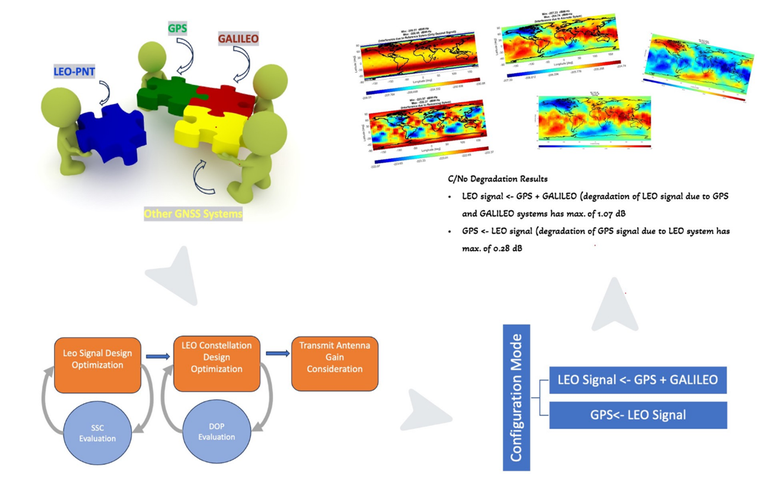![Can new navigation signals from Low Earth Orbit (LEO) constellations coexist with existing GPS or Galileo signals? [ION-ITM 2024]](https://www.unibw.de/lrt9/lrt-9.2/aktuelles/can-new-navigation-signals-from-low-earth-orbit-leo-constellations-coexist-with-existing-gps-or-galileo-signals/@@images/4d662c0f-426b-4859-a49c-dbe83f8852f1.png)
Can new navigation signals from Low Earth Orbit (LEO) constellations coexist with existing GPS or Galileo signals? [ION-ITM 2024]
12 February 2024
Can new navigation signals from Low Earth Orbit (LEO) constellations coexist with existing GPS or Galileo signals?

A prevailing trend in the space industry is the widespread adoption of Low Earth Orbit (LEO) constellations, driven by their cost-efficient launch capabilities and utilization of Commercial Off-The-Shelf (COTS) hardware resources. Currently operational and forthcoming commercial LEO constellations primarily focus on satellite communication, yet they possess the potential to be repurposed for transmitting navigation signals as well. However, it's worth noting that signals transmitted by these satellites typically fall under the category of Signal of Opportunity (SoO) and operate in a frequency band different from that of the traditional Global Navigation Satellite Systems (GNSS). As a result, significant updates to the front-end of GNSS receivers are necessary, presenting challenges, particularly in ubiquitous devices like smartphones, which constitute over 80 percent of GNSS receivers on Earth.
Addressing this challenge, a promising solution emerges in the form of a dedicated LEO-PNT (Positioning, Navigation, and Timing) constellation transmitting signals in the same frequency band as classical GNSS. Several New Space companies, including XONA, Trustpoint, Geely, Centispace, and others, are actively pursuing this concept. However, what do these signals entail? Is there potential for their co-existence with existing GPS, Galileo, or BeiDou signals? Can they be effectively tracked without causing interference to other systems operating at the same frequency?
These questions underscore the importance of thorough examination and analysis. To ensure compatibility and minimize interference, careful consideration must be given to various factors, including signal characteristics, orbital parameters, and constellation design. Optimal orbital parameters, such as altitude and number of orbital planes, play a crucial role in achieving desirable coverage and accuracy. Additionally, determining the requisite number of satellites for achieving favorable Dilution of Precision (DOP) is essential for ensuring robust positioning capabilities.
All these questions have been discussed in our latest publication “Assessment of Potential System Interference through Radio Frequency Compatibility Analysis on Existing GNSS Frequencies by Emerging LEO Constellations” presented at the ION ITM held from 22 – 25 January 2024 at Long Beach, USA.
Find out more at https://www.ion.org/itm/sessions.cfm?sessionID=1680





